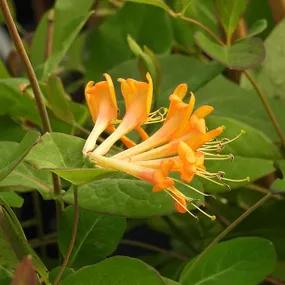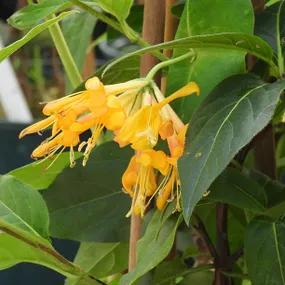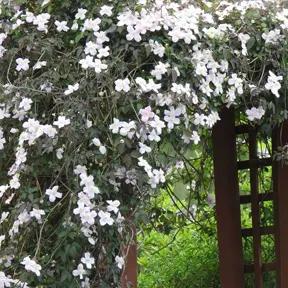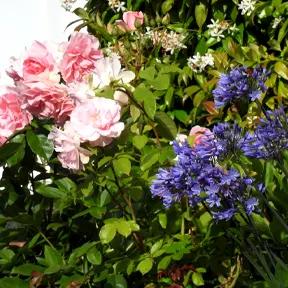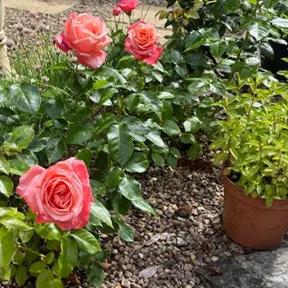Tellmann's Climbing Honeysuckle Plants
Lonicera x tellmanniana
- Deciduous mid-green leaves
- Stunning bright orange flowers
- Full hardy
- Little to no scent
- Sun or partial shade
- Needs support
- RHS Award of Garden Merit
Description
Tellmann's Orange Honeysuckle
Lonicera x tellmanniana is a beautiful deciduous climber with stunning large coppery-orange flowers with a red flush. It prefers a warm south or south-west facing wall to bloom well.
Browse our variety of honeysuckle or see our full range of climbing plants.
Growing Tellmann's Honeysuckle
Because it lacks scent, it's good to plant it where its flowers can be seen, but if you'll be walking past it then you might prefer a scented orange honeysuckle like Goldflame.
It prefers to have its roots moist but is happy in most soils as long as it has good drainage. It only needs pruning to keep it within bounds and to remove old, dead and dying growth. It provides nectar for bees, butterflies and ladybirds and berries in autumn for hungry birds. It is rabbit and deer resistant.
Planting Companions
It is perfect for the back of a 'hot' border, associating with plants such as Crocosmia, Canna Lilies and other red and orange herbaceous plants.
It also makes a bold statement alongside purple leaved shrubs such as Cotinus coggygria, or as a complimentary plant behind purple irises. It will thrive in full sun or partial shade and in most soils.
Features:
- Deciduous mid-green leaves
- Stunning bright orange flowers from May to July
- Full hardy
- Will grow to an eventual height and spread of 8m x 2m
- Little to no scent
- Sun or partial shade
- RHS Award of Garden Merit
Look out for:
Tellmanniana may be susceptible to mildew and aphids but it rarely causes a severe problem. Because of the plants attraction for insects and bees it is inadvisable to use chemical sprays.
Trivia:
Lonicera x tellmanniana was bred in Hungary in 1920 as a cross between the Chinese honeysuckle, Lonicera tragophylla, and the American honeysuckle, Lonicera sempervirens.
Planting Instructions
How to grow Lonicera x tellmanniana:
Lonicera x tellmanniana is best planted where the roots have a shady run although it will be happy in any situation and with any soil pH.It's Summer Planting Season 2025

Pot Grown & Plug Plants Delivered

Direct from the Nursery Value

No more broken plants in the post!


 Hero Img.webp)
 Hero Img.webp)
